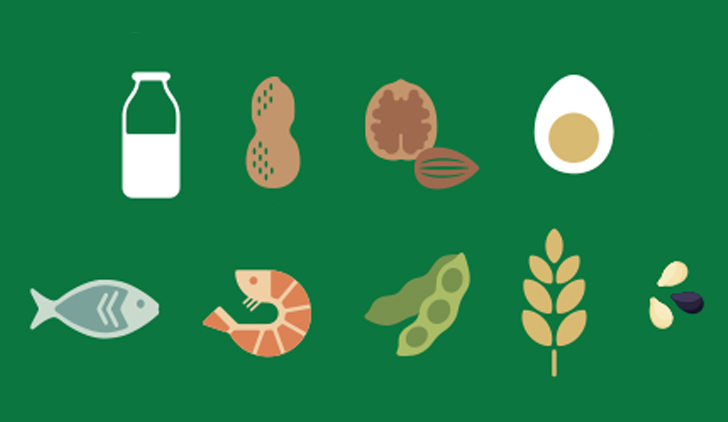
May is Food Allergy Awareness Month. It’s the perfect time to brush up on the 9 most common food allergens and how to avoid a reaction.
Millions of people have food allergies. But if you take a few precautions, you can potentially lower the chances of eating something you shouldn’t.
Major allergens
The 9 major food allergens are
- milk
- eggs
- peanuts
- fish
- tree nuts
- shellfish
- wheat
- soybeans and
- sesame.
Allergic reactions
Allergies occur when a person’s immune system reacts to certain proteins.
- Symptoms can be mild, such as swollen lips and hives, to severe, such as a constricted airway or low blood pressure.
- The worst reaction — anaphylaxis — can cause respiratory problems that can lead to death.
People with allergies who eat something they shouldn’t and experience mild to moderate symptoms should seek treatment as soon as possible. Those who have experienced severe symptoms, including anaphylaxis, should carry an EpiPen, if directed by a doctor, and use it immediately.
Food labeling
The Department of Agriculture and the Food and Drug Administration (FDA) monitor food labels to ensure companies follow rules and regulations to help people avoid allergic reactions. Labels must include all ingredients if there are more than 2 in a product, nutritional facts and the manufacturer, among other details. This helps those with allergies determine whether they can safely enjoy a food product.
Food source
One of the most important things listed on a container that includes a major food allergen is the food source. The FDA says that it must appear in 1 of 2 ways, either in
- parentheses following the name of the ingredient or
- a statement after or next to the list of ingredients.
Types of tree nuts, species of fish and crustacean shellfish (like crab, lobster and shrimp) must also be listed on labels. However, if the name of a potential allergen is in the item’s name, the requirement has been met.
Learn more about food allergens and how to stay safe
Check out our FAQs on food allergens.


